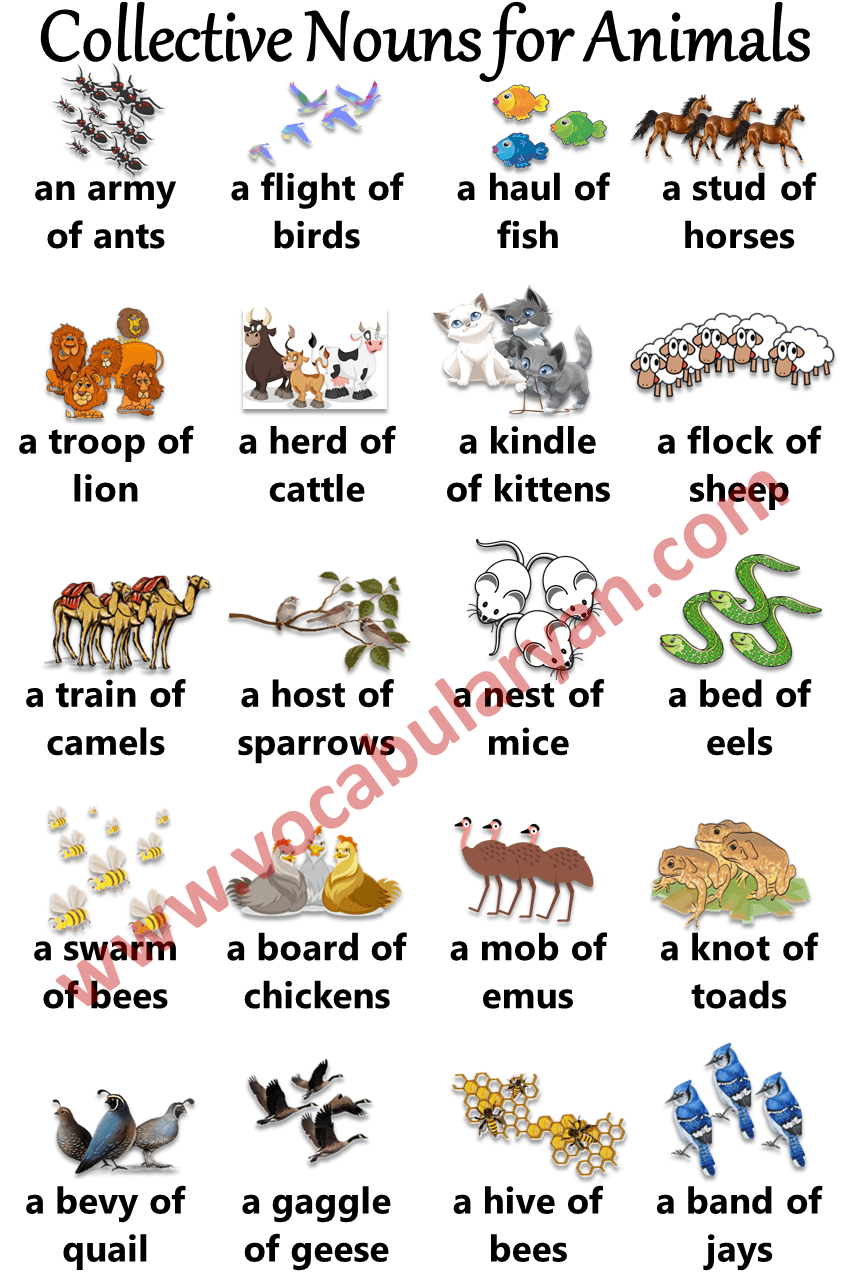Collective nouns are unique terms used to describe groups of animals. These nouns can be quite fascinating and often reflect the behavior or characteristics of the animals they represent. From a murder of crows to a parliament of owls, these collective nouns add a touch of whimsy to the English language.
Exploring the world of collective nouns can be a fun and educational experience, offering insight into the ways different animals interact and move together. Let’s take a closer look at some interesting collective nouns about animals.
Some Common Collective Nouns About Animals
One of the most well-known collective nouns is a “murder” of crows. This term dates back to the 15th century and is believed to have originated from the idea that crows would gather around a dead companion, perhaps to mourn or investigate the cause of death. Another intriguing collective noun is a “parliament” of owls, which reflects the wise and contemplative nature often associated with these nocturnal birds.
Other notable collective nouns include a “pride” of lions, a “gaggle” of geese, and a “herd” of elephants. Each of these terms offers a glimpse into the social dynamics and behavior of these animals. For example, a pride of lions typically consists of related females and their offspring, led by a dominant male. Understanding these collective nouns can provide a deeper appreciation for the natural world and the creatures that inhabit it.
Some collective nouns are more whimsical and playful, such as a “flamboyance” of flamingos or a “laboratory” of scientists. These creative terms add a sense of humor and imagination to the English language, showcasing the diversity and richness of collective nouns.
Whether you’re a language enthusiast, an animal lover, or simply curious about the quirks of the English language, exploring collective nouns about animals can be a delightful journey. These terms offer a unique window into the world of animals and the ways in which humans have sought to describe and understand them.
In conclusion, collective nouns about animals are a fascinating aspect of the English language, providing insight into the behavior, social structures, and characteristics of various animal species. From the majestic “pride” of lions to the whimsical “flamboyance” of flamingos, these terms add a touch of color and charm to our vocabulary. So the next time you encounter a group of animals, consider the collective noun that best captures their essence and enjoy the rich tapestry of language that surrounds us.
